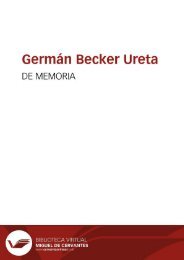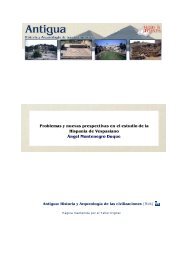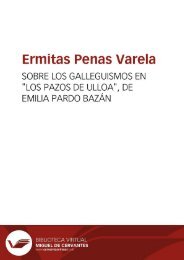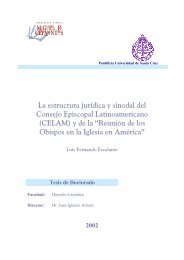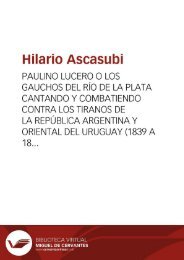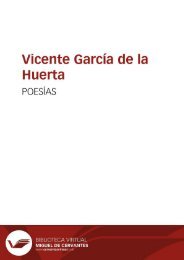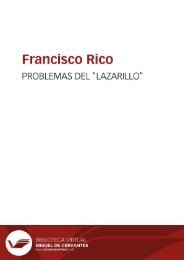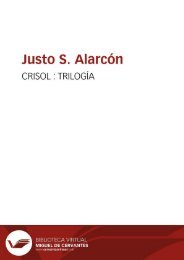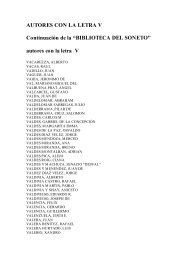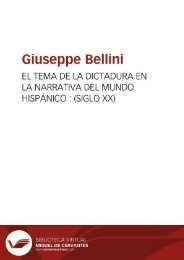You also want an ePaper? Increase the reach of your titles
YUMPU automatically turns print PDFs into web optimized ePapers that Google loves.
Anales galdosianos [Publicaciones periódicas]. Año XII, 1977<br />
masculina y la femenina, los amantes se buscan, porque en espíritu y cuerpo se necesitan uno a otro<br />
para formar un todo superior humano ». Man should recognize his need for a superior mate and hence<br />
work « para restablecer el santo derecho de la mujer al lado del varón, para mejorar su educación,<br />
haciéndole más real, más elevado, más comprensivo... Semejante espíritu anima también a la mujer<br />
respecto al varón, de suerte que con su peculiar carácter y prendas regocije y embellezca la vida... » 208<br />
Don Lope Garrido, who maintained that « en las relaciones de hombre y mujer no hay más ley que<br />
la anarquía », represents the very antithesis of this ideology. His union with Tristana is a grotesque<br />
deformation of what marriage should be, and the lessons he imparts to her the most unhealthy and<br />
corrupting of educations. With her egocentric obsession, Tristana is equally guilty. And this, I believe,<br />
is what <strong>Galdós</strong> was trying to say in this his thirteenth novel.<br />
Tristana was not the only Spanish novel of the period to treat the institution of marriage -sacrosanct<br />
in 19th century society- in an unorthodox fashion. The reading public had already been shocked<br />
by Realidad (1889), where the deceived husband forgives the erring wife, and Clarín's Su único<br />
hijo (1890), where the hero finds domesticity in his mistress and sensuality in his mate. But such<br />
heterodoxy did not end with the thematic material. The novels were also to reveal new experimentation<br />
with form. This was clearly evident in Realidad , <strong>Galdós</strong>' first dialogue novel, and it has also been<br />
recognized of late in Su único hijo , Clarín's groping anticipation of the esperpento . It is now<br />
important to acknowledge at least such an intent in Tristana also. Detailed exploration on this aspect<br />
would constitute a separate study, but we can point here to some salient features of this search for<br />
novelty.<br />
In the opening lines of his novel <strong>Galdós</strong> establishes the locale: « En el populoso barrio de Chamberí,<br />
más cerca del depósito de Aguas que de Cuatro Caminos... » Precision seems to be the note here and<br />
yet, as the novel progresses, Madrid evaporates before our eyes. Horacio and Tristana take walks but<br />
they are always in the outskirts; we know that Don Lope frequents cafés but we don't see them. The<br />
exchange of letters, a substantial part of the novel, transports us to a world of the mind and emotions.<br />
208 Karl Christian Friedrich Krause, Ideal de la humanidad para la vida , con introducción y<br />
comentarios por Don Julián Sanz del Río, (Madrid, 1871), pp. 95, 58, 94. If in Realidad it is the man<br />
who invites woman to join him in a higher plane of the spirit, in La loca de la casa it is the other<br />
way around: Victoria rescues Cruz from a lower level of self-realization. In Tristana both man and<br />
woman are lost in selfish pursuits.<br />
154



